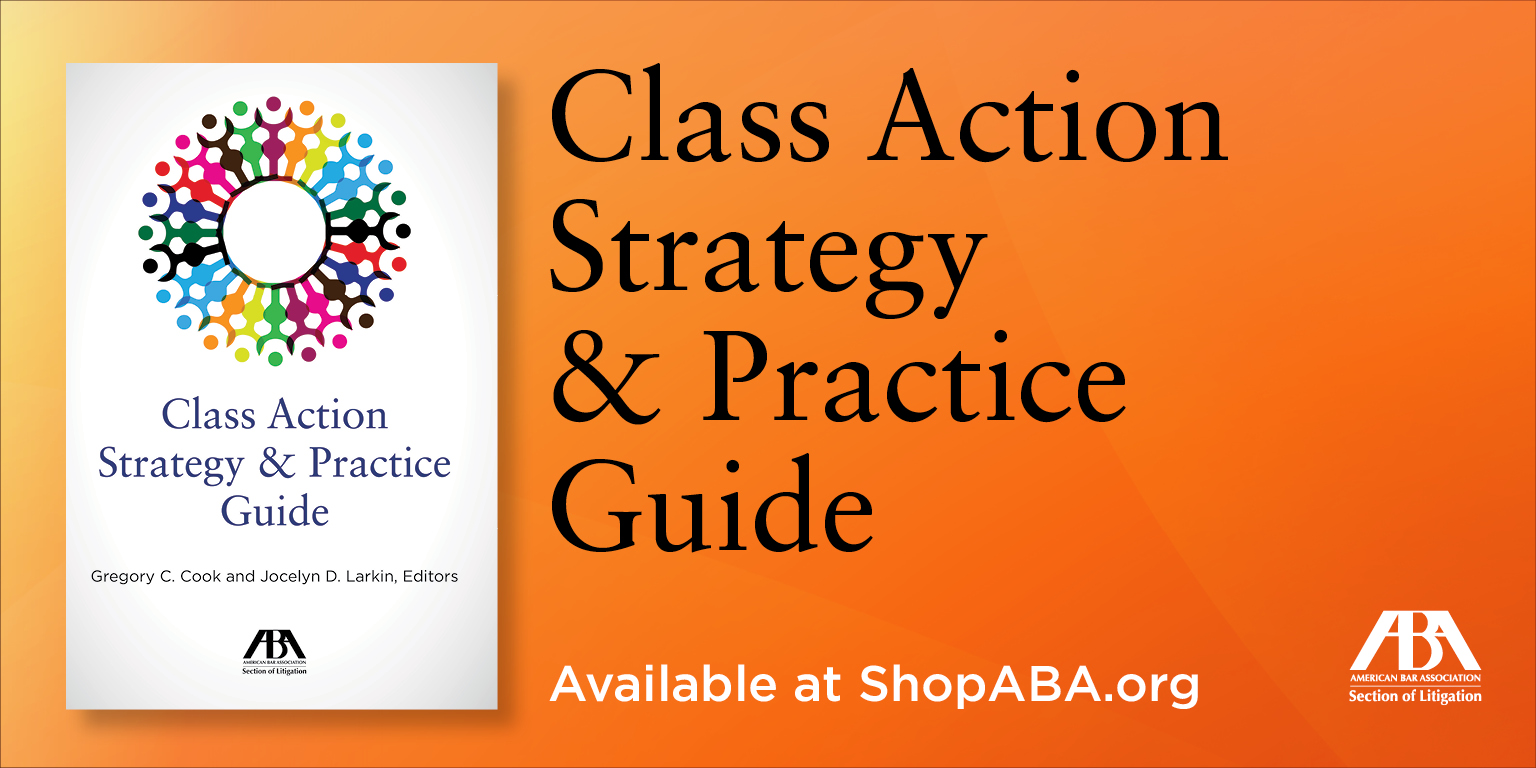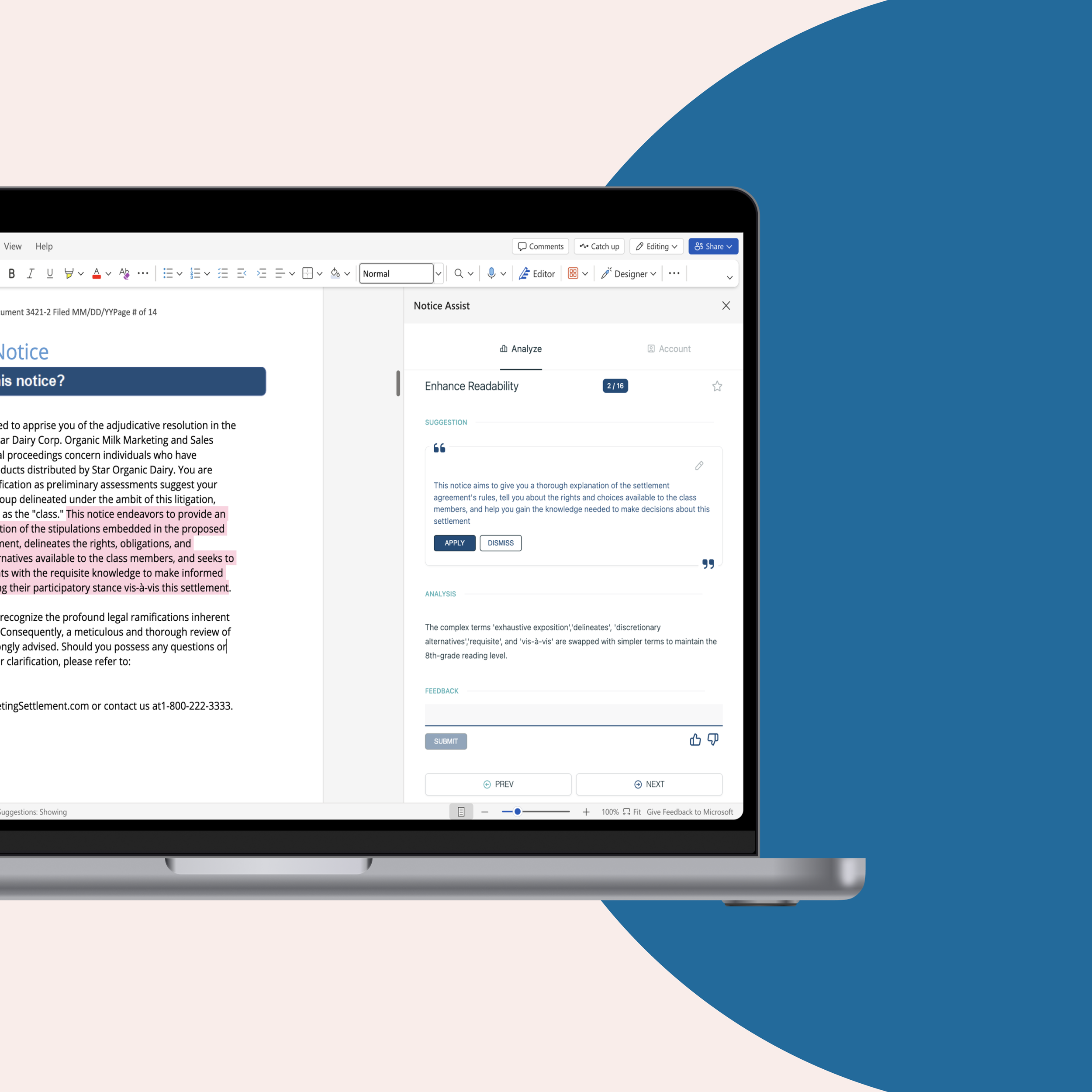Class Action Strategy and Practice Guide: A Must-Have For All Class Action Attorneys
Fabrice N. Vincent, Partner Lieff Cabraser Heimann & Bernstein.
A fabulous new text, the Class Action Strategy & Practice Guide, edited by Gregory Cook and Jocelyn Larkin and published by the American Bar Association is a must have for class action litigators and for in-house counsel alike.
The extraordinary work, authored by fourteen leading class action practitioners, provides practical insights into complex potential strategies relevant to all aspects of class action litigation, claims that can cost billions of dollars and require changed business practices in order to resolve.
Each of the Guide’s eleven terrific chapters address vital and complex aspects of class action practice. Most of the books chapters are co-authored by teams that include both plaintiffs and defense lawyers, ensuring that the content helps each and both sides understand and anticipate each other’s potential strategies and goals. The bipartisan group of authors supply vital insight necessary to effectively and successfully prosecute, defend and/or settle such complex claims.
The chapters deftly answer the key questions that practitioners must address at each stage.
Chapter Two, Investigating and Filing a Class Action by Jocelyn Larkin of the Impact Fund and by Dena Sharp of Girard Sharp describes essential considerations pertaining to the successful investigation and initiation of a class action complaint. This comprehensive Chapter covers all relevant claim investigation and claim filing issues, helping practitioners identify and avoid problems at the outset of a case, including consideration of issues that help practitioners identify claims well suited for a class action as well as those likely to fail in the class context. For claims likely ill suited for class consideration, the Chapter even explains potentially appropriate alternatives to class proceedings. The Chapter is comprehensive, well addressing choice of class representatives, venue selection, choice of law rules, Multi-District Litigation, class definitions and media strategy, among other topics.
Fourteen leading class action practitioners provide practical insights into complex potential strategies.
Defendant’s forum choices are addressed in Chapter 3, by Gregory Cook and Steven Corhern, in a multi-layered analysis. Defendants often have very little time to react to the plaintiff’s forum choice, even though it may be the most important initial question in the case. Should the defendant opt to remove the case from state to federal court? Is it better to have a federal judge who has time to fully review the briefs and arguments and will likely apply a more rigorous evidentiary standard to expert testimony? However, will removing the case cause other plaintiff’s counsel to notice the litigation and lead to more sophisticated counsel becoming involved? Will removing the case make settlement more difficult and potentially affect the structure of the settlement as well as its costs? How will standing issues play out in each forum? Is the potential of a motion to transfer the case to an MDL after removal good news or bad news?
Chapter 4, by Robert Herrington, addresses the defendant’s options in responding to the complaint. What are the steps for a full and complete early case assessment? Are there ways to resolve the individual complaint, either before filing or after? Could early concessions or a voluntary change to a challenged practice lead to an argument by plaintiff’s counsel that they are entitled to catalyst attorneys’ fees? Maybe the case is significant enough (or so insignificant) that an early class settlement is the best move for the client?
In Chapter 5, by Kathryn Honecker and Robert Herrington, the authors tackle class action discovery from both sides’ perspective. Should the court grant a stay of discovery while considering a motion to dismiss? Should the defendant agree to broader discovery in the hope of demonstrating the presence of individualized issues? How broadly should discovery be drafted? What type of agreement on Electronically Stored Information (ESI) is appropriate? Can the defendant make predominance arguments regarding varying facts without allowing broad discovery on those facts? Is bifurcation of discovery between merits and class issues still a viable option after the Supreme Court has made clear that merits issues can overlap with the elements of class certification? Are communications allowed with class members before and/or after certification and on what terms? Is the list of class members discoverable? Is discovery allowed from absent class members and, if so, in what forms?
Chapter 6, by Steven Corhern and Gregory Cook, discusses summary judgment options, a strategy that has evolved over the years. Can and should a defendant move for summary judgment before class certification? Are there advantages even if the motion will not win the case (for instance, narrowing the case, causing the plaintiff to respond in an individualized way). Should the plaintiff agree that the court should hear the defendant’s summary judgment motion before class certification? What standard should the Court apply?
Chapter 7, by Catha Worthman and Andrew McGuinness, is a deep resource on class certification arguments for both sides, covering each of the elements of the Federal Rule 23, including typical arguments for and against class certification. Chapter 7 teaches that class certification is discretionary and difficult to predict. As a result, both sides need to focus on providing the court with a complete evidentiary record – not merely hypothetical or boilerplate legal arguments.
Chapter 8, by Gregory Cook and Daniel Karon, addresses management of multiple class actions (and government enforcement actions, especially criminal actions). For instance, when and why should counsel file for MDL consolidation? What does the MDL Panel find most important in deciding whether to consolidate and where? How many cases must exist before consolidation? Can consolidation backfire on defendants? To what districts or judges are cases most likely to be transferred? Are there trends in consolidation decisions? Once consolidated, how do plaintiff lawyers organize their steering committees? How do counsel on both sides try to coordinate MDL proceedings?
Class actions, like other civil cases, ordinarily settle but the process is vastly more complicated, requires court approval, and offers a bevy of traps for the unwary. Settlement and all that it entails is covered in Chapter 9, by Jason Tompkins and Christopher Friedman. Practitioners must consider settlement from the very beginning of the case and the desire for a final global resolution can drive decisions that would otherwise seem upside down. Defendants may decide not to remove or compel arbitration; plaintiffs may avoid issuing press releases to avoid copycat cases. Settlement creates some of the most interesting strategic issues. When the defense has decided to settle, they will normally want the most expansive class definition and the broadest release, even though they have vociferously opposed any certification earlier in the case. Plaintiffs in turn will find themselves downplaying the value of a claim that they once touted as a blockbuster. When the terms of a settlement are finally hammered out, plaintiff and defense counsel share a common goal of obtaining approval and will then join forces to this end and against any objectors who oppose the accord.
Chapter 10, by James Finberg and Andrew McGuinness, explains trial plans. Occasionally class actions go to trial and, even when they do not, courts often demand trial plans at the class certification stage. In the past, the question of actually conducting a class action trial was often not actively considered (and even more rarely conducted). While trial plans used to be rare, federal courts often now treat them as essential. Defendants frequently argue that a class trial will devolve into endless individual-by-individual testimony. Plaintiffs must be prepared to respond by explaining how they propose to try the case with a focus on liability and/or methods of macro-proof, such as statistics or admissions. This chapter both discusses the elements of a good trial plan and provides concrete examples of trial plans that can springboard plaintiff counsel’s own trial plans.
Finally, class action expert witnesses are addressed in Chapter 11, by Fred Burnside and Rebecca Francis. Today, it is rare that a motion to certify a class is filed without an accompanying expert witness report. Likewise, virtually every opposition brief uses expert testimony. The competing expert testimony typically centers on whether the claims can be proven with common evidence although they can be used for many other purposes (e.g. numerosity, feasibility of notice, merits issues). Daubert motions, which test the admissibility of expert testimony, are an essential part of almost every class certification fight today and the Supreme Court has focused on expert testimony in several of its recent class certification decisions. Does the court apply the same Daubert standard at class certification as it does before trial? Does the expert rely upon admissible evidence? Does the testimony “fit” the legal theory and claims? Would the testimony be admissible in an ordinary single plaintiff case? Should the plaintiff or defendant hire a consulting expert to assist in litigating the case? How can an expert use sampling to support claims of classwide liability or impact?
Class actions involve decisions on strategy at every turn. The positions of the parties are constantly changing and counsel must always be looking ahead and, at the same time, carefully watching their flank. This book helps all practitioners and parties identify, analyze and answer key strategy questions.
Ever evolving class action tactics, case law and rule make this insightful practice guide a must read for lawyers, judges, advocates and decision makers at every level.












